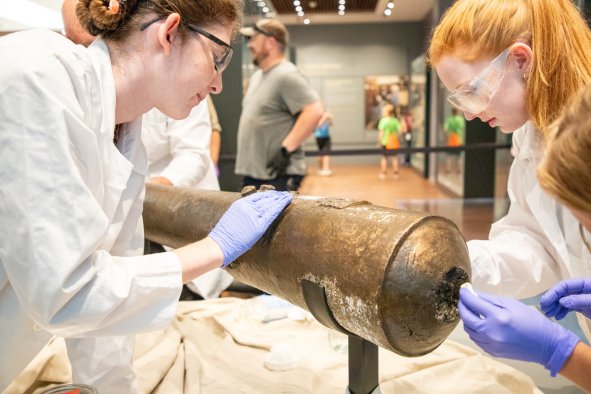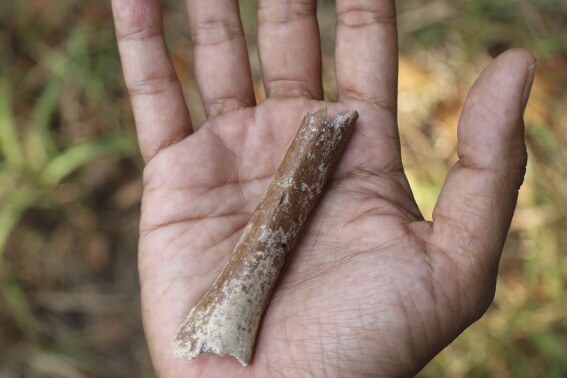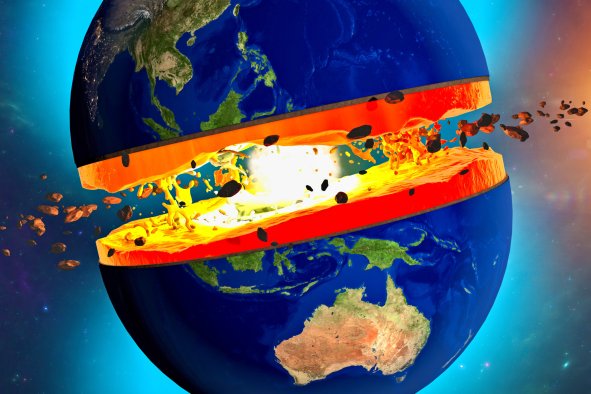A magnitude 5.2 earthquake shook the ground near the town of Lamont, California, followed by numerous aftershocks.
The earthquake struck at 9:09 p.m local time, and was felt as far away as Los Angeles, San Francisco, and Sacramento.
U.S. Geological Survey (USGS) data reveals the location of the epicenter in Kern County, 18 miles southeast of Bakersfield, and the locations of at least 49 subsequent aftershocks.
More From Newsweek Vault: What Is an Emergency Fund?
A map of the nearby region shows the locations of the recent aftershocks, all scattered around the site of the epicenter. The most powerful of these aftershocks were magnitude 4.5, 4.1, and 4.0. The rest were below magnitude 4.
Earthquake aftershocks are smaller earthquakes that occur in the same general area during the days following a larger earthquake. They are a natural part of the adjustment process of the Earth's crust as it responds to the new distribution of stress caused by the main shock, and generally decrease in frequency and magnitude over time, with the largest aftershock usually about 1 to 2 magnitude units smaller than the main shock.
More From Newsweek Vault: Start Growing Your Emergency Fund Today
The duration of aftershock activity can vary widely, lasting from several days to even years, depending on the magnitude of the main shock and the geological conditions of the region.
According to the USGS, there is more than a 99 percent chance of another aftershock with a magnitude above M3 in the next week, a 93 percent chance of one above M4, 25 percent chance of one greater than M5, and a 3 percent chance of one bigger than magnitude 6.
The magnitude of an earthquake is a measure of the energy released during the seismic event. The magnitude scale is logarithmic, meaning each whole number increase on the scale represents an increase in measured amplitude by a factor of 10, and approximately 31.6 times more energy being released.
Magnitudes of between 4.0 to 4.9 may cause noticeable shaking of indoor items, while magnitudes of 5.0 to 5.9, can cause damage to buildings and other structures. 6.0 to 6.9 magnitude quakes may cause a lot of damage in populated areas, while magnitudes of 7.0 or higher can cause serious damage across huge areas.
The original earthquake was originally rated by the USGS as a magnitude 5.3, but was later downgraded to a 5.2. Weak tremors were felt during a baseball game between the Los Angeles Dodgers and the Philadelphia Phillies at the Dodger Stadium in Los Angeles, but the only locations where shaking was "moderate" or "strong" were close to the epicenter, near the Buena Vista Lake Bed and scattered around Kern County.
No damage has been reported as a result of the earthquake, but a boulder that fell onto the southbound I-5 Freeway caused two lanes to be shut while it was removed, ABC7 Los Angeles reported.
"LAFD personnel have surveyed the City of Los Angeles by land, air and sea following the magnitude 5.3 earthquake at 9:09 PM PST centered south of Bakersfield, California. No significant infra/structure damage or injuries have been noted within the City of Los Angeles," the Los Angeles Fire Department said in a statement.
Seismologist Lucy Jones said on X that the quake occurred near a fault that caused the deadly 1952 Kern County earthquake.
"It is near the White Wolf fault that produced a M7.5 in 1952 but does not appear to be on that fault," she posted.
This 7.5-magnitude quake killed over 10 people, injuring hundreds more, and was the largest quake in the country since the 1906 earthquake that destroyed much of San Francisco, sparking fires and destroying tens of thousands of buildings, killing over 3,000 people.
Do you have a tip on a science story that Newsweek should be covering? Do you have a question about earthquakes? Let us know via science@newsweek.com.
Disclaimer: The copyright of this article belongs to the original author. Reposting this article is solely for the purpose of information dissemination and does not constitute any investment advice. If there is any infringement, please contact us immediately. We will make corrections or deletions as necessary. Thank you.




